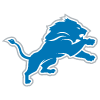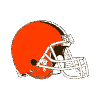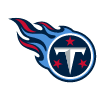2024 NFL season: Most likely to win first Super Bowl? Ranking 12 teams that lack Lombardi Trophy
Lions head coach Dan Campbell was asked recently whether he viewed the upcoming season as a Super Bowl-or-bust campaign in Detroit. In typical Campbell fashion, he provided an answer that turned the question on its head.
“I don’t see bust,” Campbell said. “I see Super Bowl. I don’t know what the bust is.”
This level of Lions optimism might take some getting used to, but it’s certainly not unjustified.
Yes, the Lions have never even reached a Super Bowl, much less won one — they’re one of 12 current NFL teams lacking a Lombardi Trophy — but after last season’s breakthrough, Detroit is expecting even more in 2024. The Lions made it all the way to the NFC Championship Game this past January, and actually took a 24-7 lead over the 49ers into halftime … only to ultimately see the game and their Super Bowl dreams slip away after the break.
Still, the Lions now look and feel like contenders, history be damned. A few other franchises without a Super Bowl victory also appear to be legitimate contenders in ’24, giving us a handful of clubs that could make history in Super Bowl LIX on Feb. 9 at the Caesars Superdome in New Orleans.
So, without further ado, here are the 12 Lombardi-less teams, ranked from most to least likely to win a title in this coming season.

The Lions were the proverbial “team on the rise” one year ago, entering last season with plenty of hope but also lingering questions. They’d finished the 2022 season on a tear, winning eight of their final 10 games, but that came after a 1-6 start. Detroit’s years of football misery didn’t help the outlook.
What followed was one of the greatest seasons in franchise history, with the Lions rolling all the way to the NFC Championship Game, where they were in the driver’s seat … before they weren’t. Where the Lions go from here will be fascinating. They’re undeniably one of the more talented young teams in the NFL. But do they possess that championship quality?
Jared Goff is coming off his two best seasons and was great in the playoffs, leading to a four-year, $212 million extension in May. Offensive coordinator Ben Johnson is back calling plays. Newly extended WR Amon-Ra St. Brown, TE Sam LaPorta and a slew of young, capable playmakers return, as does one of the best offensive lines in football. That side of the ball is in great shape, befitting a championship-caliber unit.
Whether Detroit can finally break through to its first Super Bowl likely depends on what strides the defense can make. Aaron Glenn’s group stopped the run beautifully last season but was a sieve versus the pass, also failing to pressure quarterbacks consistently enough. When Detroit’s defense sagged down the stretch, it put additional pressure on the offense to be exceptional.
There’s tangible hope that the secondary is in better shape with the cornerback additions of veteran Carlton Davis and rookies Terrion Arnold and Ennis Rakestraw Jr., but losing CB Cameron Sutton and safety C.J. Gardner-Johnson makes this a young group. The front seven features pretty good talent and depth, but improvement will be mostly contingent on returning players improving from within.
With the Goff-led offense, an improved defense and the ultra-aggressive Dan Campbell making the calls, Detroit is one of the most dangerous teams in football, even in what appears to be a highly competitive NFC North. With that comes added pressure, and the Lions won’t sneak up on anyone this season. Whether they can win it all this year remains the biggest question. No doubt, they’re close.

Even in a season where Cincinnati started 0-2 and 1-3 and was riddled with injuries — not the least of which was Joe Burrow missing seven full games — the team still finished with a 9-8 mark in 2023, impressively navigating one of the NFL’s toughest schedules. That the defense was statistically among the worst groups in the league also offers a dose of reality.
Yes, having Burrow and an additional slew of injured players back will help immensely. No, the Bengals are not Super Bowl contenders once more unless they improve on defense. There’s also the matter of surviving the AFC North gauntlet, with all four teams appearing tough on the surface.
This could be a “final run” sort of season, at least with the current core Cincinnati has assembled. Tee Higgins remains in limbo with his contract, as he, B.J. Hill, Mike Hilton and others head into the final years of their respective deals. Burrow and Ja’Marr Chase aren’t going anywhere, and with Higgins and more WR depth, Cincy boasts one of the best passing units in the NFL.
Offensively, the major uncertainties lie within the running back and tight end positions as no clear standout players have emerged yet. Although the offensive line could pose some initial difficulties, it is comparatively better in terms of depth and talent.
Defensively, the secondary is on watch. Old friend Vonn Bell is back to help steady the unit. Dax Hill is moving to outside cornerback, which suddenly has some decent depth. But it’s hard to imagine the team allowing 8.1 yards per pass attempt (more than 2 yards worse than both the Ravens and Browns in 2023) and thriving this season.
When Burrow led the Bengals to within a few plays of winning Super Bowl LVI, the Bengals’ defense was statistically middle of the road — 17th in points allowed, 13th in rush yards per play and 21st in pass efficiency. If Cincy’s D can return to that range again, or perhaps a bit better, the Bengals’ Super Bowl window should reopen.

The Bills endured some major bloodletting this offseason, yet they remain contenders because of Josh Allen. It’s as simple as that. Now, are they merely playoff contenders, or are we somehow entering an era where Allen can lift a less-talented Bills roster to unseen heights?
This was a borderline top-10 team for most of last season, alternately hot and cold, and it’s hard to make a case Buffalo has more talent after moving on from WRs Stefon Diggs and Gabe Davis, center Mitch Morse, a slew of defensive linemen and four key members of the secondary this offseason. Sure, the Bills get several capable players back from injury and they added some potentially underrated pieces via the draft (S Cole Bishop) and free agency (WR Curtis Samuel), but this thing might not be instant coffee.
For one, the AFC remains loaded, and the division suddenly is up for grabs. The Dolphins should remain competitive, and the Jets figure to be far more so, assuming Aaron Rodgers is upright. Four of the Bills’ first six games are on the road, they have two West Coast trips, as well as some tough games right around their Week 12 bye. This is no easy slate.
But Allen gives them a shot. Has he really been stripped of all his armament? If you look closer at last season, when Diggs’ production started waning, the Bills played some of their best ball and got back in the playoff race. Davis was always a wild card: hot or cold, no in between. With James Cook, two good tight ends, Samuel, rookie Keon Coleman, Khalil Shakir and others, there should be plenty of feedable mouths — and not as many yapping about getting the ball every play.
Though it may not be easy, as is often the case with the Bills, underestimate their chances of winning the title this year at your own risk.

The Texans have reached the Divisional Round of the playoffs five times in their 22 seasons of existence, including this past campaign’s surprising postseason run. They’ve never reached the AFC conference final before, but the vibes around Houston are that this team might be as close to doing so — and perhaps even reaching the Super Bowl — as it’s ever been.
One draft class, headlined by C.J. Stroud and Will Anderson Jr., has helped reverse the team’s fortunes. That spurred some aggressive moves during this extremely busy offseason, including trades for Stefon Diggs and Joe Mixon, as well as the signings of Danielle Hunter and several defensive backs. Suddenly, with rising-star coach DeMeco Ryans entering Year 2, we must consider the Texans to be contenders until proven otherwise.
Stroud displayed innate poise and feel early in his career, turning in one of the finest rookie QB seasons in recent memory. He now has one of the game’s best weapons in Diggs, a backfield upgrade in Mixon and a strong returning cast of playmakers in Nico Collins, Tank Dell, Dalton Schultz and others. Assuming the O-line continues its ascent, this Houston offense is good enough to make a deep playoff run.
Don’t forget the Texans’ hidden superpower, too, on special teams. They finished No. 1 two years running on the vaunted Rick Gosselin’s special teams rankings and will have most of their key contributors back, along with ace coordinator Frank Ross.
But as is the case elsewhere on this list, defense likely will be the ultimate X-factor. Ryans’ unit turned in some strong performances late last season, thriving on turnovers. But for this to become a more complete team, the defense must at least be middle of the road in most major categories. Anderson and Hunter form a strong edge-rushing duo, and there is far more talent, depth and versatility in the back seven.
Is Houston sufficiently equipped with horses up front? Can the Texans cultivate significant progress in the secondary? The responses to these inquiries may be the deciding factor between a letdown of a season and one of the most remarkable seasons in the team’s history.

Eventually, the 2024 Browns should have their core in place, but right now, a big chunk of key players are still working their way back from injury. And that core does include Deshaun Watson, the Browns’ $46 million-per-year QB who faces his highest-pressure season to date.
If Watson proves to be healthy following shoulder surgery and can improve on what we’ve seen from him in Cleveland so far, the Browns will have a shot. Last season, they went 9-3 in games started by Watson and Joe Flacco (including the postseason loss at Houston) and 2-4 in all other games. The Browns’ top-ranked defense kept them in most games, but even that elite unit needs more help.
The Browns landed Jerry Jeudy to round out what should be an able group of pass catchers. Nick Chubb and Jerome Ford are back to fuel the ground game, although Chubb’s working his way back from another serious knee injury. Also rehabbing: parts of an offensive line that could range anywhere from very good to below average, depending on its eventual health.
Backed by such a good defense, the Browns’ offense must be capable, at the very least, with moments of explosiveness and some measure of consistency. That’s it. We don’t expect greatness, just competency. Averaging more than two turnovers per game just won’t cut it.
Led by reigning Defensive Player of the Year Myles Garrett, Za’Darius Smith, Jeremiah Owusu-Koramoah, Denzel Ward and others, this might be the best D in the NFL again. There were a handful of games where this unit was up against it, but the biggest problem often came down to possessions. The Browns were minus-11 in turnover ratio, counting the playoffs, and allowed seven defensive TDs.
There’s also the matter of the schedule, which opens and closes with stretches of four roadies in six-game spans and includes some wicked AFC North opponents in between. But the bottom line is that Cleveland’s Super Bowl chances, assuming the defense carries over from last year, boil down to what strides Watson and the offense can make.

Are the Falcons Super Bowl contenders? That’s a tough question to answer.
The acquisition of Kirk Cousins certainly raises Atlanta’s profile significantly, and the NFC South remains an eminently winnable division. The 2023 Falcons beat the likes of the Packers, Texans and Buccaneers, all playoff teams a year ago, and lost six one-possession games in spite of a limited passing game. The 2024 schedule lays out very favorably, too, and should lead to more wins.
On the other hand, this is a team that lost to the likes of the Panthers, Commanders, Cardinals and Titans a year ago. Defensively, the Falcons did a good job of limiting yards and conversions last season. But they ranked 18th in points allowed because the offense scored touchdowns on less than half of their goal-to-go situations and the defense forced just 16 turnovers (ranking 29th).
For all of the signs the Falcons were all in this offseason — clearing out the old coaching staff, signing Cousins and adding several receivers — they also left some meat on the bone. Atlanta failed to add any impact defenders in free agency and used its first-round selection on QB Michael Penix Jr., who, in a perfect world, won’t see the field this season except in garbage time.
Raheem Morris is getting another shot as a head coach, and signs point to a playoff run if this passing game can get off the ground. With Drake London, Kyle Pitts, Darnell Mooney and Rondale Moore, there should be enough targets, and the run game looks very strong with Bijan Robinson and Tyler Allgeier behind an excellent offensive line.
I could see the Falcons winning 11 games or so. That really wouldn’t shock me. But winning 11 and making a run to the Super Bowl would, at least until I’ve seen more from this team. There are too many variables to make a stronger prediction.

Like the Falcons, the Chargers look to reverse the trend of underachieving — and the Bolts have a more-than-capable coach and quarterback with which to achieve that. Jim Harbaugh returns for his second NFL head-coaching stint, and with it comes the task of turning the Chargers from annual also-rans to division and Super Bowl contenders.
The 49ers arguably were more of a mess in 2011 when Harbaugh took over in San Francisco than what the Chargers are now. Having Justin Herbert is a big advantage. The Chargers have only gone 30-32 over the past four seasons when the quarterback starts, but they’re also just 1-5 during the same stretch when he doesn’t. Herbert will have fewer proven weapons entering this season, and he’s not expected to have to throw as much as he has previously, but Los Angeles absolutely can win with him running the show.
Harbaugh’s mission will be to keep this team healthier than it has been in recent years and take better advantage of the talent L.A. still has. We’ve seen the offense be reshaped subtly this offseason into more of a Harbaugh-type unit, with the Bolts loading up on offensive linemen, backs and tight ends, portending a more balanced attack. This won’t suddenly be Michigan running it 32 straight times against Penn State, but I’ll be shocked if the Chargers field a bottom-10 run game again this year as they did in 2023.
Los Angeles also should be better defensively — the question is, how much? Keeping the edge-rushing duo of Joey Bosa and Khalil Mack healthy is crucial; without them, there are serious questions about how much pressure the team can generate. There also are some talented secondary pieces, and I still believe S Derwin James has yet to peak as a player, but there’s the matter of how this group will come together under 41-year-old coordinator Jesse Minter, who’s running his first NFL defense.
Harbaugh’s arrival and a healthy Herbert should result in wins. I believe in this team more than many others do. I don’t think you can fall back on that “same old Chargers” routine anymore. Having a season where they exceed expectations is one thing, and winning the Super Bowl is quite another. But don’t forget that Harbaugh’s 49ers made the NFC Championship Game during each of his first three years in San Francisco, with one trip to the Super Bowl. Thus, counting out the Chargers — even this season, playing in the same division as the Chiefs — feels like a mistake.

Entering last season, the Jaguars were viewed as a team on the rise, having vanquished the Chargers in an epic playoff comeback and hung tough with the Chiefs at Arrowhead in the Divisional Round. With Trevor Lawrence leading a young, exciting offense and plenty of moldable talent on the other side of the ball, Doug Pederson and his staff appeared to be on the verge of something special.
The previous season was a setback for the team as Lawrence’s performance declined and he took a significant beating. Despite starting on an 8-3 footing, the Jaguars fell out of the playoff contention completely and had to witness the Texans snatch their position as the new favourites of AFC South.
Can Jacksonville bounce back? The short answer is yes, of course.
Lawrence must take fewer sacks and significantly cut down the turnovers. Upgrades on the O-line should help in both areas. The Jaguars’ offense boasts ample weapons, even with the loss of Calvin Ridley. The additions of Gabe Davis and Brian Thomas Jr. give the Jaguars length and vertical speed, and Lawrence gets back most of his other top targets, along with multi-threat RB Travis Etienne.
I thought the Jaguars might do more to upgrade the secondary personnel, but they still could be stout back there. The front looks stronger following Travon Walker‘s late-season breakout in Year 2, the addition of Arik Armstead and the re-signing of Josh Allen. Combine them with some talented linebackers, and the defensive talent — a lot of it homegrown — looks pretty solid. A top-15 D isn’t out of the equation, even if expecting a top-10 finish feels a bit rich to me.
The power might have shifted in the South, but Jacksonville doesn’t appear to be too far off from where Houston rose to last season. The Jags won’t make many preseason Super Bowl favorites lists, and they have to prove that last season was a speedbump, but there’s a respectable young nucleus in Duval County that can’t be forgotten.

The Vikings had a franchise-shifting offseason when Kirk Cousins left town, forcing a reset at the game’s most important position. If they’re going to win a Super Bowl this season, it will be on the shoulders of Sam Darnold and/or J.J. McCarthy. The former has never started a playoff game, much less quarterbacked a winning NFL team. The latter is a rookie, although he enters the NFL with a national championship under his belt.
It remains uncertain if McCarthy’s success in leading Michigan to the pinnacle of college football last season will translate into NFL success. Some people were skeptical, believing that his success was largely due to the Wolverines’ exceptional talent and depth. However, McCarthy does have one advantage – the Vikings seem to provide a conducive environment for a young quarterback to potentially flourish when he eventually takes over as the starter.
Head coach Kevin O’Connell appears to be a sharp play-caller and general offensive designer. Justin Jefferson and Jordan Addison are a terrific, young 1-2 punch at receiver. The offensive line looks to be in good shape. Free-agent signee Aaron Jones upgrades the backfield significantly. And once he’s back from injury, T.J. Hockenson is among the league’s best tight ends. There might not be a better offensive situation for a rookie QB to step into this season.
The Vikings also brought in multiple players to each level of the defense, including pass rushers Jonathan Greenard, Andrew Van Ginkel and Dallas Turner; Blake Cashman at linebacker; and Shaquill Griffin at corner. Adding them to an existing core that includes Harrison Smith, Ivan Pace Jr., Cam Bynum and Josh Metellus makes for a pretty good foundation, with aggressive coordinator Brian Flores calling the shots.
But assuming McCarthy takes over at some point this season, no rookie quarterback has ever completed a pass in the Super Bowl. That’s one reason to question the damage this team could possibly do. Another is that the Vikings play in the suddenly competitive NFC North, which just landed two teams in the playoffs, with the Bears coming up short but adding more firepower themselves this offseason. It’s a big ask to project this team ending up in New Orleans in February.

There were some encouraging developments in Jonathan Gannon’s first season as head coach, even amid a 4-13 campaign. Kyler Murray missed more than half the season but showed signs down the stretch of being the playmaker he formerly was pre-injury. And even with the team going 1-8 in games started by other QBs, Arizona was pretty darned competitive throughout, losing five one-score games and winning twice on the road in December, at Pittsburgh and at Philly.
With another year between Murray and his ACL surgery, more is expected. He also got help at receiver (via rookie Marvin Harrison Jr. and vet Zay Jones), on the offensive line (Jonah Williams and two draft picks) and at running back (with rookie Trey Benson complementing James Conner nicely). Don’t overlook a possibly huge year from TE Trey McBride, too; he averaged 67.3 receiving yards with Murray last season, as opposed to just 31.9 without.
But if Gannon is going to translate promise into Year 2 victories, it’s going to take a Herculean effort defensively. The Cardinals ranked 29th in both rushing-yard and pass-yard averages, were dead last in third-down defense and allowed the second-most points in the league at 26.8 per. This offseason, they added some solid pieces in free agency (Justin Jones, Mack Wilson, Sean Murphy-Bunting) and two potential starters via the draft (Darius Robinson, Max Melton). Yet it’s clear this unit remains a work in progress until we witness major improvements firsthand.
There’s also the matter of the division. The Cardinals might be able to make a move on the Seahawks as they enter a transition period, and they might even be able to gain ground on the Rams, although it will take a better head-to-head effort after losing two games to them by a combined 40 points last season. Still, the biggest hurdle remains the 49ers, who beat Arizona by two-plus scores twice and remain a prime Super Bowl contender.
I can absolutely stump for an improved Cardinals team. But there’s just no way I can project them to come within sniffing distance of the club’s first-ever Super Bowl title this coming season. Let’s instead circle back and see how close they are a year from now.

The Titans struck boldly this offseason, handing out more than $200 million in contracts and swinging a big trade with the Super Bowl champs, landing CB L’Jarius Sneed. Adding RB Tony Pollard, WRs Calvin Ridley and Tyler Boyd and upgrading the offensive line with potentially two or more new starters feels like a great start for first-year head coach Brian Callahan. And if QB Will Levis isn’t up to the job, the Titans even added Mason Rudolph, who outplayed Kenny Pickett in Pittsburgh last year.
Overall, it’s a far better offensive environment for Levis than what he endured last season, and he had some bright spots as a rookie, no doubt. But there’s also a ton of pressure to produce this year and further his progress. Otherwise, the Titans might be seeking his replacement next offseason. Levis took 28 sacks in nine starts and fumbled seven times, losing four. He also completed just 58.4 percent of his passes. Those are a few areas you’d like to see him improve.
The protection should be better. Even with a rookie (first-rounder JC Latham) potentially taking over at left tackle, Tennessee figures to be stronger at center with Lloyd Cushenberry III. And the Titans’ most underrated move this offseason might have been adding another Callahan — vaunted OL coach Bill, who is Brian’s father — to the staff. Having time to throw to Ridley and DeAndre Hopkins will be critical toward maximizing the offensive potential.
Yet with Derrick Henry gone and an unclear picture on defense, expectations in Nashville are rightfully muted for now.
The Titans played some decent D at times last season under Mike Vrabel’s watch, running mostly in the middle of the pack overall, but who knows what this unit will look like under first-year coordinator Dennard Wilson? Oddly, the Titans were first in red-zone defense but second-to-last in takeaways. Sneed and Chidobe Awuzie can help improve upon the Titans’ league-worst six interceptions a year ago, but predicting this group to suddenly become a top-10 defense feels aggressive.
Tennessee might have the potential to surprise this season, but they are likely at least a year away from contending for a title.

The team with the least chances in the No Super Bowls Club has several advantages.
Bryce Young might have struggled as a rookie, but so did fellow former No. 1 overall QBs Alex Smith, Matthew Stafford and Jared Goff, and all three helped teams reach Super Bowls eventually. Young hasn’t even turned 23 years old, and his success in high school and college — losing only a handful of games combined — suggests he’ll ultimately find his way in the NFL.
Carolina’s offseason additions should help immediately. New head coach Dave Canales was praised for his work at his past two stops in Tampa Bay and Seattle, and he’s been tasked with getting the most out of Young. The Panthers traded for Diontae Johnson and drafted Xavier Legette to beef up the WR room. They spent a ton of money helping the interior offensive line. Second-rounder Jonathon Brooks could give the backfield more punch once he’s fully recovered from a torn ACL. Suddenly, there are some promising pieces here.
But to say the Panthers are close to contending — even in their own division — requires some serious faith. Carolina added some pieces to a defense that allowed fewer than 300 yards per game last year, but following the trade of Brian Burns and with a new staff in place, the expectations can only be so high, even in the NFC South. As solid as this defense was a year ago, it was severely lacking in big-play production and now must move forward without arguably its best playmaker.
Young still has time to develop, and for all we know, Canales might be exactly what he needs. But even the most optimistic Panthers fan has to know that the franchise’s first Lombardi Trophy probably isn’t coming back to Charlotte next winter. Carolina still has too far to go to make that magic happen in Year 1 of a new regime.




